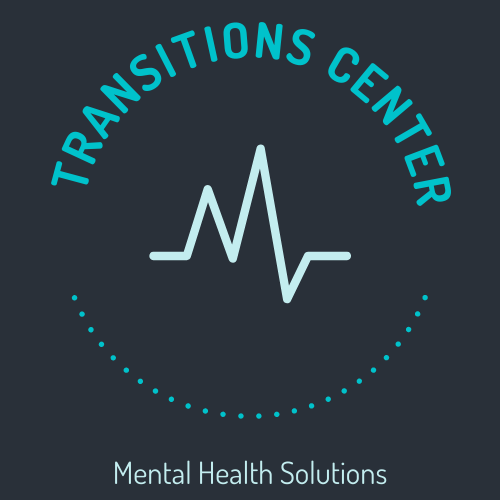In today’s fast-paced and demanding work environment, it’s no surprise that workplace stress has become a prevalent issue affecting the mental health and wellbeing of millions of individuals worldwide. Understanding the causes and effects of workplace stress is crucial in identifying potential risks and taking the necessary steps to address them.
In this article, we will explore the common signs and symptoms of workplace stress and provide mental health solutions to help individuals cope with it effectively. From building a supportive workplace culture to self-care strategies and seeking professional help, we will discuss the various ways to manage workplace stress and prevent burnout. Additionally, we will explore the importance of promoting mental health awareness and education in the workplace and conclude with a call to prioritize mental health as an essential component of workplace wellbeing. Whether you’re an employer or employee, this article aims to equip you with the necessary tools to tackle workplace stress head-on and create a healthier, more productive work environment.
Understanding Workplace Stress And Its Impact On Mental Health
Workplace stress can arise from various factors, such as workload, pressure to meet deadlines, conflict with colleagues, and job insecurity, among others. When left unaddressed, workplace stress can have severe implications on an individual’s mental health, including depression, anxiety, and burnout. Prolonged exposure to workplace stress can lead to physical symptoms such as fatigue, headaches, and disrupted sleep patterns, affecting an individual’s overall wellbeing.
Understanding the root causes and impact of workplace stress is crucial in identifying potential risks and taking the necessary steps to prevent and address it. By promoting a culture of open communication, encouraging work-life balance, and providing support and resources to manage stress, individuals and organizations can work towards mitigating the adverse effects of workplace stress on mental health.
Common Signs And Symptoms Of Workplace Stress
Workplace stress can manifest in various ways, and it’s essential to be aware of the common signs and symptoms to identify potential risks and address them promptly. Some of the most common signs and symptoms of workplace stress include:
1. Feeling anxious, overwhelmed, or irritable at work
2. Reduced concentration, memory, and productivity
3. Insomnia or disrupted sleep patterns
4. Physical symptoms such as headaches, muscle tension, and stomach problems
5. Social withdrawal and reduced participation in work-related activities
6. Increased use of drugs, alcohol, or tobacco to cope with stress
7. Work-related exhaustion and burnout
It’s crucial to recognize these symptoms and take the necessary steps to manage stress effectively to prevent long-term adverse effects on mental health. By practicing self-care, seeking support from colleagues or professionals, and addressing the root causes of stress, individuals can mitigate the negative effects of workplace stress on their overall wellbeing.
Building A Supportive Workplace Culture
Building a supportive workplace culture is crucial in promoting mental health and wellbeing in the workplace. A supportive workplace culture is one that values open communication, mutual respect, and recognizes the importance of work-life balance. Here are some strategies that can help build a supportive workplace culture:
1. Encourage Open Communication: Encourage employees to communicate openly and honestly with each other and management. Creating an environment where employees feel comfortable expressing their thoughts and concerns can help prevent workplace stress.
2. Promote Work-Life Balance: Encourage employees to prioritize their wellbeing by promoting a healthy work-life balance. Offer flexible work arrangements, such as working from home, compressed workweeks, or part-time work.
3. Recognize And Reward Employees: Recognize and reward employees for their hard work and achievements. Acknowledge their contributions to the organization, and provide opportunities for professional development.
4. Provide Resources And Support: Provide employees with resources and support to manage workplace stress effectively. This can include access to counseling services, wellness programs, or stress-management workshops.
By prioritizing mental health and creating a supportive workplace culture, employers can not only improve employee retention and productivity, but also foster a healthy and happy work environment.
Self-Care Strategies For Coping With Workplace Stress
Self-care strategies are an effective way to manage workplace stress and promote mental health and wellbeing. Here are some self-care strategies that individuals can use to cope with workplace stress:
1. Take Regular Breaks: Taking regular breaks during the workday can help individuals recharge and reduce stress. Take a few minutes to stretch, take a walk, or practice deep breathing exercises.
2. Practice Mindfulness: Mindfulness involves being present in the moment and focusing on the current experience. Practicing mindfulness techniques such as meditation or yoga can help individuals manage stress and increase focus and concentration.
3. Engage In Physical Activity: Engaging in regular physical activity can help reduce stress, boost mood, and improve overall well being. Consider incorporating exercise into your daily routine, such as going for a walk during lunch break or joining a fitness class.
4. Connect With Others: Building social connections at work can help individuals feel supported and reduce stress. Take time to connect with colleagues or friends outside of work, or join a social club or group.
5. Prioritize Self-Care: Prioritizing self-care is essential for promoting mental health and wellbeing. Make time for activities that bring joy and relaxation, such as reading, listening to music, or spending time with loved ones.
By incorporating self-care strategies into their daily routine, individuals can effectively manage workplace stress and promote mental health and wellbeing.
Seeking Professional Help For Workplace-Related Mental Health Issues
In some cases, seeking professional help may be necessary to manage workplace-related mental health issues. Mental health professionals, such as therapists, psychologists, or psychiatrists, can provide individuals with the tools and resources they need to manage stress and promote overall mental health and wellbeing.
Here are some signs that may indicate it’s time to seek professional help:
1. Persistent symptoms of anxiety, depression, or other mental health conditions
2. Difficulty managing stress, even with self-care strategies and workplace support
3. Feelings of hopelessness, helplessness, or worthlessness
4. Changes in appetite, sleep patterns, or energy levels
5. Difficulty concentrating, making decisions, or completing tasks
6. Substance use or abuse to cope with stress
If you’re experiencing any of these symptoms or are struggling with workplace-related stress, it’s essential to seek professional help. Mental health professionals can provide individuals with the tools and resources they need to manage stress effectively and promote overall mental health and wellbeing.
Preventing And Addressing Burnout In The Workplace
Burnout is a state of mental, physical, and emotional exhaustion caused by prolonged stress. It is a common problem in the workplace, where employees are often overworked and feel overwhelmed by their workload. Burnout can have serious impacts on productivity, morale, and job satisfaction. Fortunately, there are steps that can be taken to prevent burnout and address it when it occurs.
The first step in preventing burnout is understanding the signs and symptoms so that you can identify it early on. Common signs of burnout include lowered self-esteem, fatigue, apathy towards work tasks, irritability, difficulty sleeping or concentrating, increased absenteeism from work or decreased performance.
Once burnout has been identified, it is important to explore the root causes of the problem so that appropriate solutions can be implemented. If a person is feeling overwhelmed with workloads or not adequately supported by colleagues or supervisors at work then this needs to be addressed as part of any solution plan. Additionally, unhealthy work habits such as skipping breaks or long hours need to be reviewed and discussed in order to create an optimal working environment for all employees.
In terms of solutions for addressing burnout once it has been identified, self-care practices such as taking regular breaks and incorporating relaxation into day-to-day routines are essential. Creating a supportive environment in the workplace through positive communication between team members also goes a long way in helping prevent burnouts before they start occurring. Additionally, recognizing accomplishments made by employees helps them stay motivated while setting realistic expectations will help to prevent them from feeling overwhelmed with their workloads. Finally, employers should make an effort to prioritize well-being among its employees through offering wellness initiatives such as yoga classes or massage therapy services at work if possible.
Promoting Mental Health Awareness And Education In The Workplace
Mental health is an integral part of overall well-being, and promoting mental health awareness and education in the workplace can have a positive impact on employee morale, productivity, and job satisfaction. Having access to resources such as mental health workshops or seminars can give employees the tools they need to manage stress, recognize signs of burnout, cultivate healthy relationships with colleagues, cope with anxiety or depression, and prioritize self-care.
One way to promote mental health awareness and education in the workplace is through training seminars for staff members. These seminars should provide information about common mental illnesses, how to recognize signs of distress in oneself or others, proper ways to approach conversations about mental health issues, de-stigmatization strategies for those seeking help, and resources that are available for support. Additionally providing access to therapists or counselors who specialize in work related issues is another way organizations can promote comprehensive mental healthcare.
Organizations should also ensure that their policies around annual leave take into account any mental health concerns an employee might have and make sure there are clear regulations surrounding sick days so that staff members feel comfortable taking time off if they need it. Finally employers should create an open environment where employees can communicate openly about their feelings without fear of judgment or repercussions. This helps foster a sense of trust between colleagues which can have a positive impact on overall morale and job satisfaction.
Conclusion: Prioritizing Mental Health In The Workplace
Mental health is an important factor in overall well-being and employers should make it a priority to ensure that their staff members feel supported and respected in their workplace. By taking a proactive approach to addressing mental health issues, organizations can create an atmosphere where employees feel safe to disclose any struggles or difficulties they might be facing. This fosters greater job satisfaction among staff members and helps to reduce the risk of burnout.
Organizations can promote mental health awareness through providing training seminars on mental illness, introducing policies that are more flexible around annual leave and sick days, making counselors or therapists available for employees who require specialized support, and creating an open environment where conversations about mental health issues are not stigmatized. Additionally, offering wellness initiatives such as yoga classes or massage therapy services at work can also be beneficial in helping employees prioritize their own self-care habits both inside and outside the workplace.
In conclusion, by prioritizing mental health in the workplace organizations can create a sense of trust between colleagues which helps build stronger relationships between team members. This positive shift in attitude towards mental health leads to improved productivity, morale, and job satisfaction which benefits both employers and employees alike.
About the Authors
Transitions Center for Natural Mental Health Treatments for a variety of physical and mental dependency issues and conditions. Substance use disorders are difficult to understand for many people. The physical and mental aspects of any substance disorder are complicated and unique to the individual suffering. The differences between physical and psychological dependency vary but have some similarities. Transitions Center for Natural Mental Health Treatments help the public know what to look for as a means of helping a loved one cope with the challenges of mental health disorders.
This article was written with the help of Mary Jane’s CBD Dispensary, a top CBD online. CBD products have worked with many people who have physical, mental or emotional disabilities. They are passionate about helping their customers find relief by providing them with quality-made CBD Hemp products that work best for their needs. If you need help finding the right product for your specific health concerns, check out their site today!

